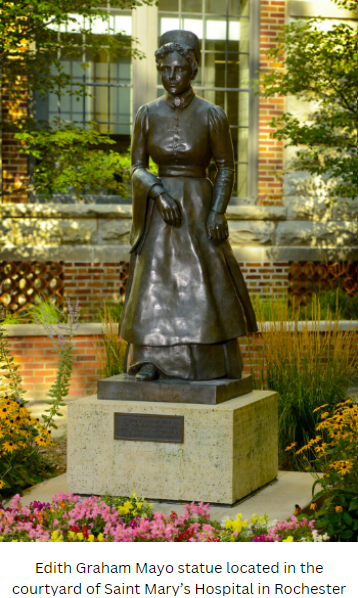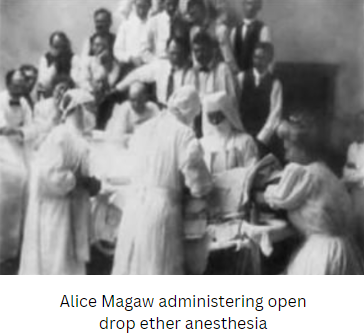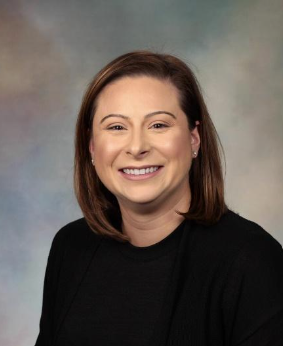U.S. Bureau of Labor and Statistics reports that the employment of Certified Registered Nurse Anesthetists (CRNA) is supposed to grow by over 38% from 2022 to 2032, much faster than the average of all occupations (U.S. Bureau of Labor Statistics, 2023). This demand is partially driven by an increased aging population and the demand for healthcare services (U.S. Bureau of Labor and Statistics, 2023).
Although Mayo Clinic has hospitals in Rochester, MN, Jacksonville, FL, and Phoenix, AZ, the population in their Phoenix, Arizona location has grown to approximately 1.6 million since the COVID pandemic, making it the 5th largest populated city in the U.S. (U.S. Bureau of Labor and Statistics, 2023). Coupled with Mayo Clinic Arizona’s continued growth and bold forward initiatives, CRNA recruitment and retention has become a high priority.
Not many are aware, but Mayo Clinic has a long-standing, rich 134-year history with the n urse anesthetist profession. In fact, the first Mayo Clinic nurse anesthetist was Edith Graham, who was taught personally by Dr. William W. Mayo and Dr. Charles H. Mayo. However, it would be Edith Graham’s friendship with Alice Mcgaw coined the “Mother of Anesthesia” by Dr. Charles H. Mayo, that would genuinely give a name to Mayo Clinic’s nurse anesthetist heritage (Keeling & Guilder, 2014). Alice Mcgaw was Mayo Clinic’s sole nurse anesthetist from 1893 to 1900. For Alice Magaw, putting patients to sleep was both an art and a science. She relied on her own observations, monitoring pupils, skin color, pulse, muscle tone, and facial expression, as well as depth and effort of respirations to judge anesthetic depth (Keeling & Guilder, 2014). Alice Magaw published five medical journal articles detailing the technical aspects of administering open-drop ether anesthesia as well as completing 14,000 anesthetics with no anesthesia-related deaths.
urse anesthetist profession. In fact, the first Mayo Clinic nurse anesthetist was Edith Graham, who was taught personally by Dr. William W. Mayo and Dr. Charles H. Mayo. However, it would be Edith Graham’s friendship with Alice Mcgaw coined the “Mother of Anesthesia” by Dr. Charles H. Mayo, that would genuinely give a name to Mayo Clinic’s nurse anesthetist heritage (Keeling & Guilder, 2014). Alice Mcgaw was Mayo Clinic’s sole nurse anesthetist from 1893 to 1900. For Alice Magaw, putting patients to sleep was both an art and a science. She relied on her own observations, monitoring pupils, skin color, pulse, muscle tone, and facial expression, as well as depth and effort of respirations to judge anesthetic depth (Keeling & Guilder, 2014). Alice Magaw published five medical journal articles detailing the technical aspects of administering open-drop ether anesthesia as well as completing 14,000 anesthetics with no anesthesia-related deaths.
Teaching the art of anesthesia was essential for the Mayo nurse anesthetists. Alice Magaw trained Mary Hines, R.N., to administer anesthesia as well. Mary Hines learned quick ly and became the third Mayo nurse anesthetist as Alice Magaw married and left the hospital. Later, during World War I, Mary Hines taught numerous Army nurses who came to Mayo for a six-week course in anesthesia delivery (Keeling & Guilder, 2014). By then, Mayo Clinic was famous for its nurse anesthesia training program, which is now the longest, continuously operating program, 134 years later.
ly and became the third Mayo nurse anesthetist as Alice Magaw married and left the hospital. Later, during World War I, Mary Hines taught numerous Army nurses who came to Mayo for a six-week course in anesthesia delivery (Keeling & Guilder, 2014). By then, Mayo Clinic was famous for its nurse anesthesia training program, which is now the longest, continuously operating program, 134 years later.
So, where do we go from here? The demand for CRNAs is only increasing, and we need to get creative with our marketing strategies, compensation, and benefits packages. Mayo Clinic has recently started instating a more modern approach to benefits with student loan retirement matching, education financial support through their career investment programs, and added maternal/paternal paid leave.
Just as the nurse anesthesia practice has had to change over the past 150 years, so will our creative recruitment strategies.
Article co-written by:

Donna Eyler
MSN, CRNA

Heather Danke
DNAP, CRNA
References
Keeling, A. W., & Guilder, J. P. (2014). The nurses of Mayo Clinic: Caring healers. Mayo Foundation for Medical Education and Research.
U.S Bureau of Labor Statistics. (2023). Nurse Anesthetists, Nurse Midwives, and Nurse Practitioners : Occupational Outlook Handbook: : U.S. Bureau of Labor Statistics (bls.gov)\https://www.bls.gov/ooh/healthcare/nurse-anesthetists-nurse-midwives-and-nurse-practitioners.htm - tab-6